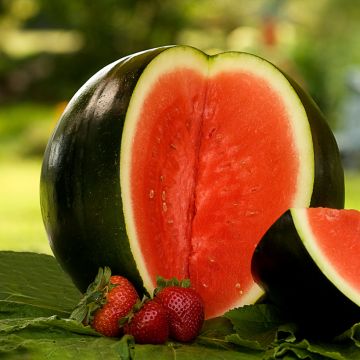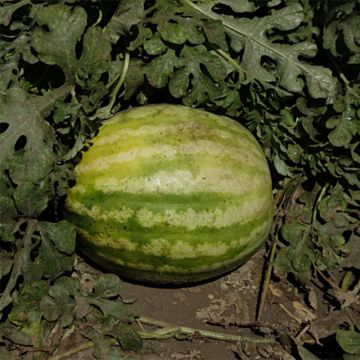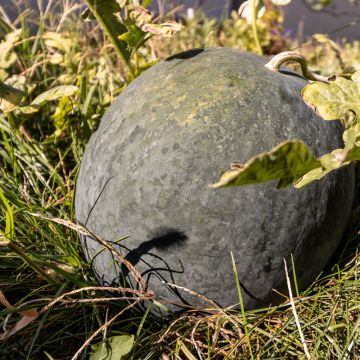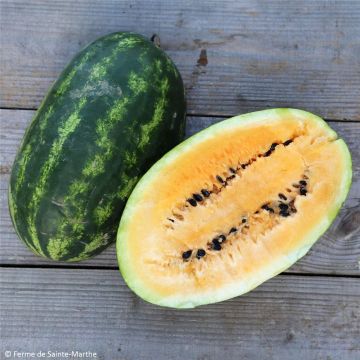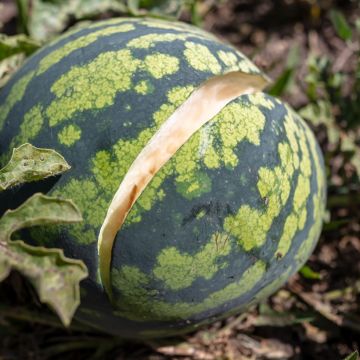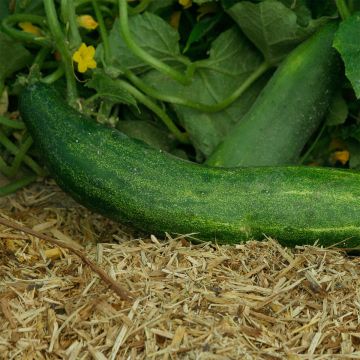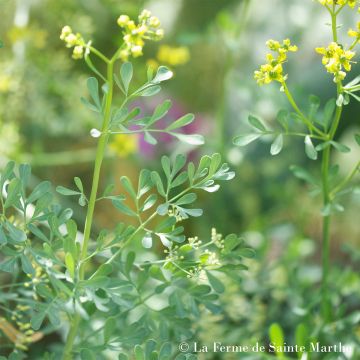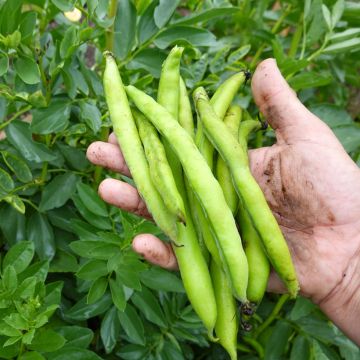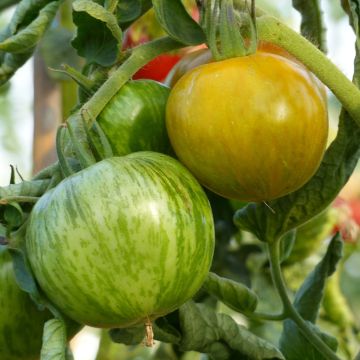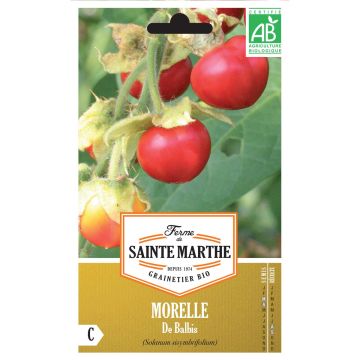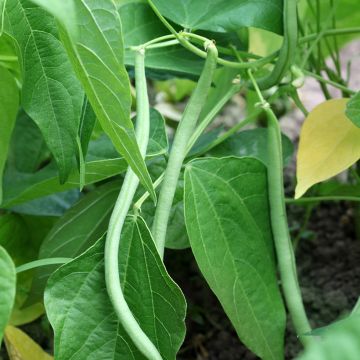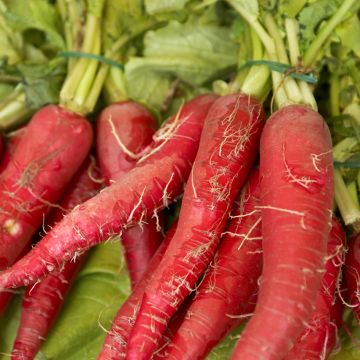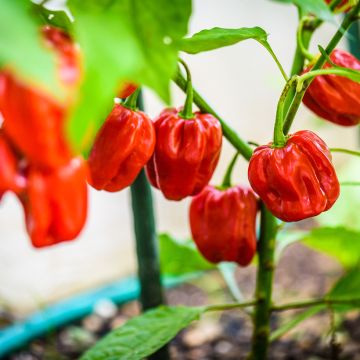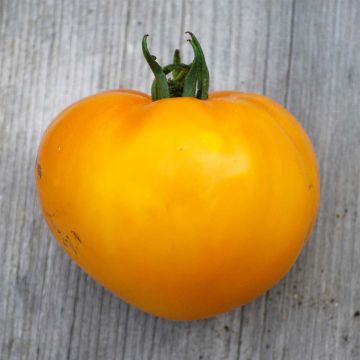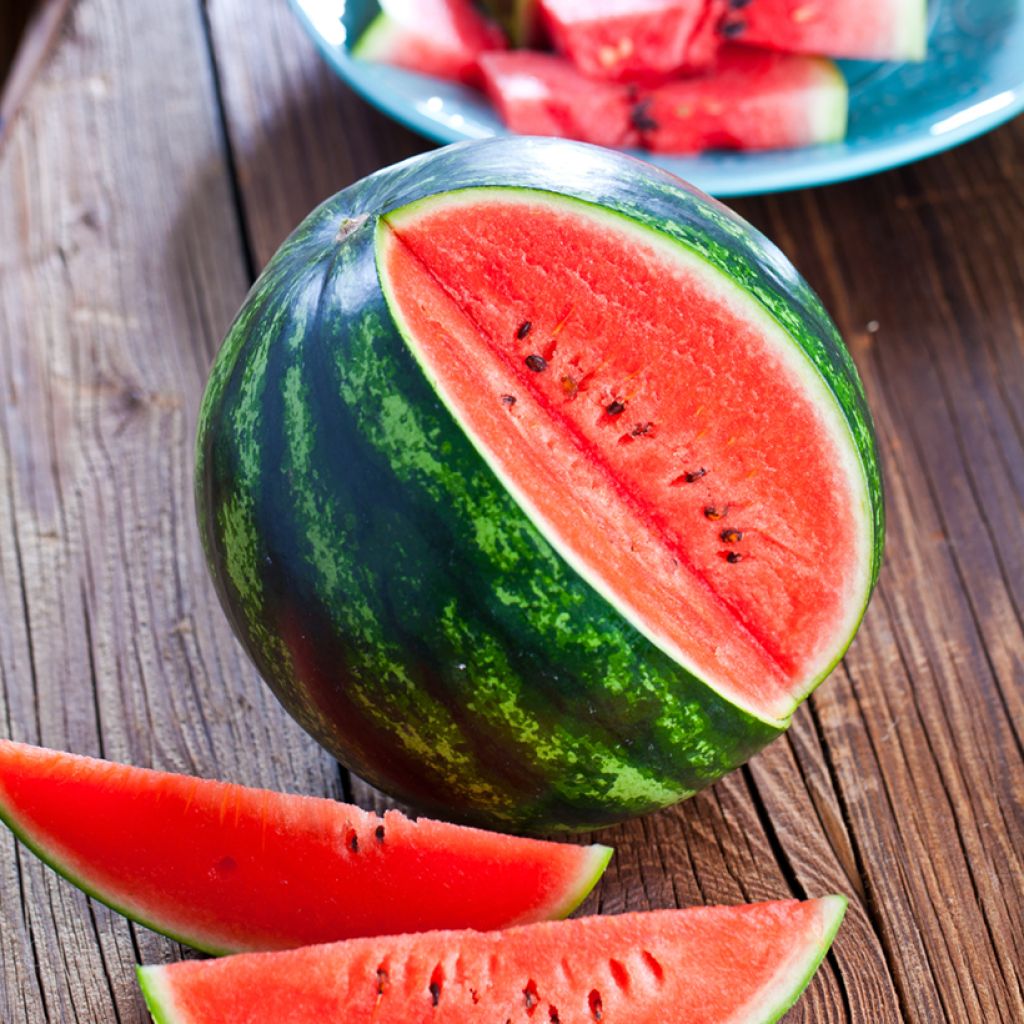

Citrullus lanatus Crimson Sweet Bio
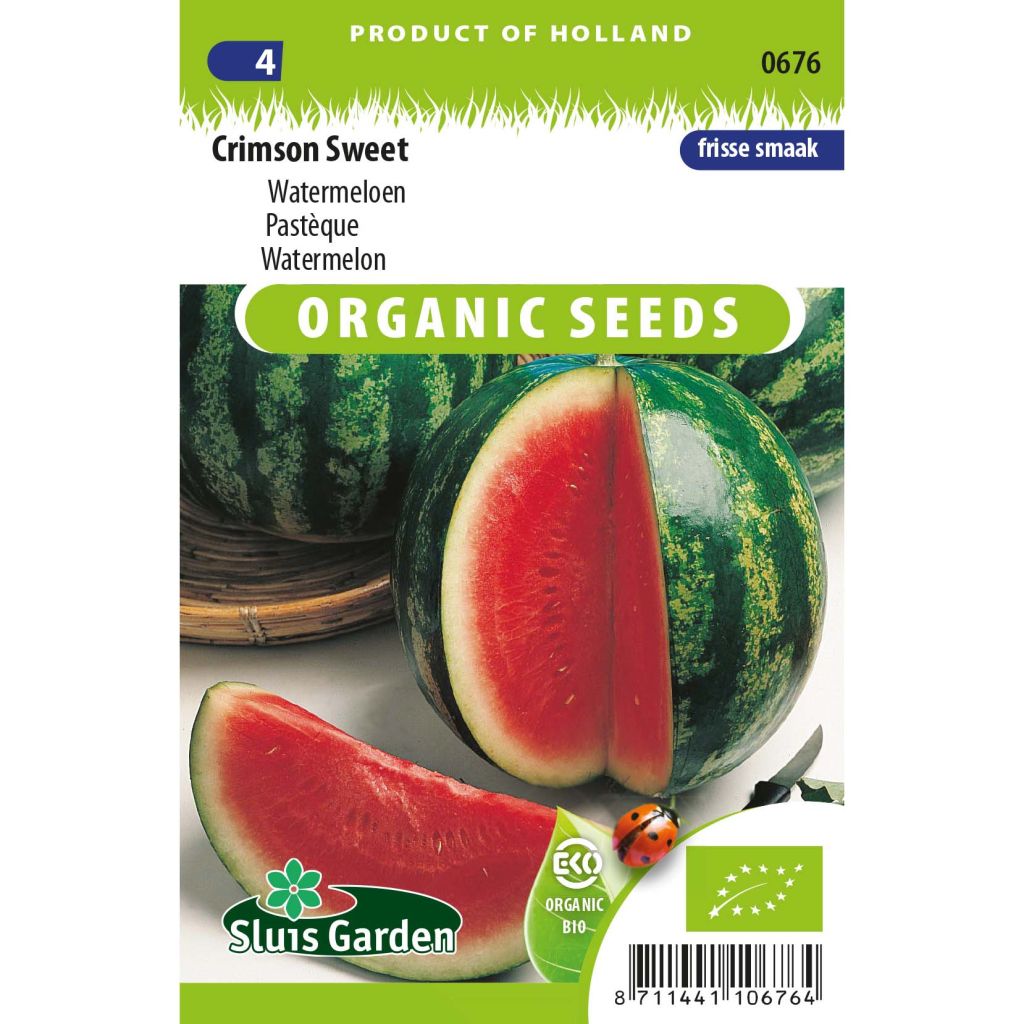

Citrullus lanatus Crimson Sweet Bio
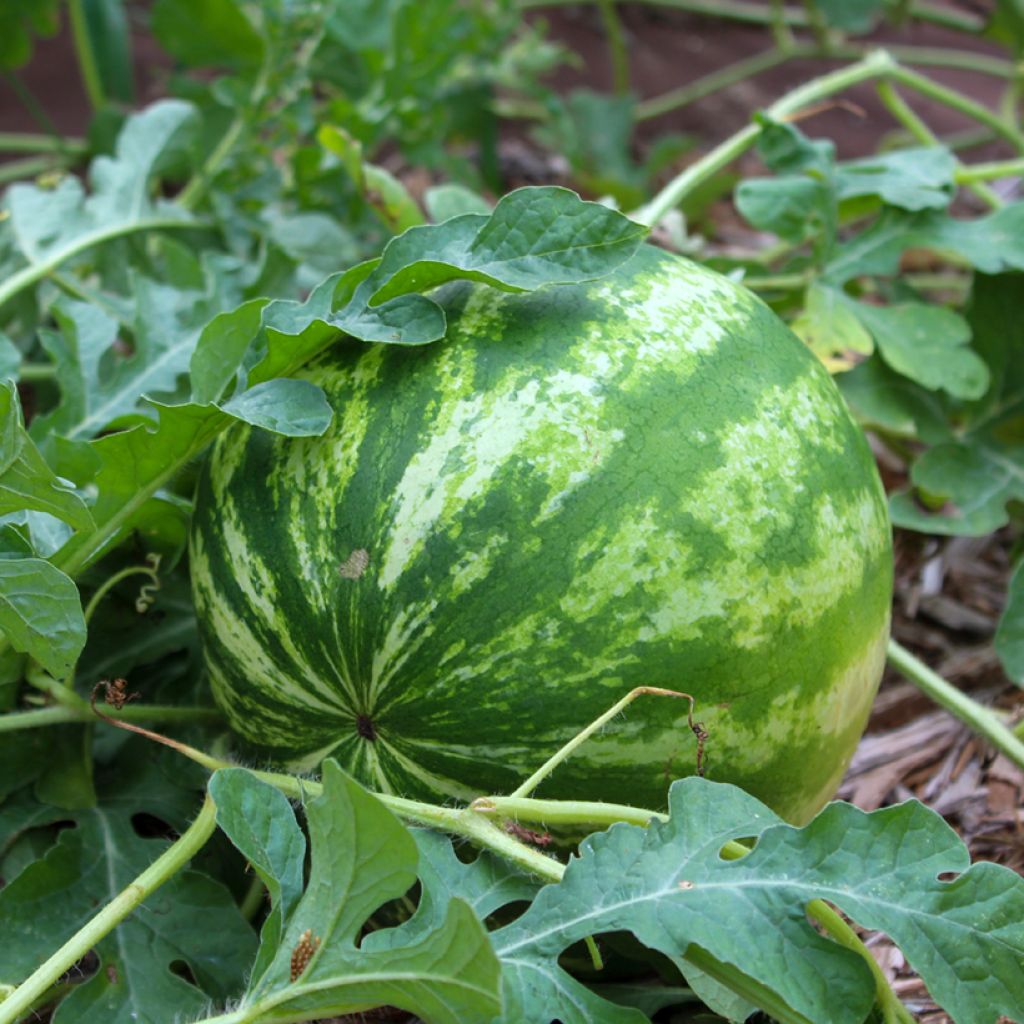

Citrullus lanatus Crimson Sweet Bio
Citrullus lanatus Crimson Sweet Bio
Citrullus lanatus Crimson Sweet Bio
Watermelon
No production because the young plant has disappeared. To be redone.
Nathalie F., 05/11/2020
This item cannot be shipped to the selected country
Dispatch by letter from €3.90
More information
Schedule delivery date,
and select date in basket
This plant carries a 6 months recovery warranty
More information
We guarantee the quality of our plants for a full growing cycle, and will replace at our expense any plant that fails to recover under normal climatic and planting conditions.
Seed-only orders are dispatched by sealed envelope. The delivery charge for seed-only orders is €3.90.

Description
The Crimson Sweet watermelon is a semi-early variety with very large ovate fruits that can weigh up to 10 kg. Its light green skin marbled with dark green encloses a deep red, very sweet, juicy, and very refreshing flesh! It requires a sunny, warm location and regular watering to produce its best fruits. It is resistant to fusarium wilt and anthracnose. Sowing is done in warm conditions in March and April, in a nursery in May, and harvesting continues from July to September.
Watermelon was cultivated before the Christian era in the Nile Valley, as evidenced by the frescoes in the tombs of the pharaohs. Watermelon fruits can be eaten raw, either salted or sweet, just like melons. In hot regions, they are highly appreciated for their refreshing quality. They also make very good jams. They are consumed cut into cubes with crushed ice or with various exotic fruits in fruit salads. Watermelon has antiscorbutic, purifying, and hydrating properties. It contains vitamins (A, B, C) and minerals (calcium, magnesium, iron).
Maintenance: Watering should be plentiful and frequent, but not with water that is too cold to avoid slowing down the plant's growth. Vegetative ground cover is beneficial. Hoeing and weeding are recommended.
Harvest: Watermelons are harvested as they ripen: they are ripe when they lose their shiny colour and are heavy.
Storage: It can be stored for a few days in a cool place after harvest.
Gardener's tip: Regular hoeing and weeding are recommended. Applying mulch is advised in case of drought.
Report an error about the product description
Harvest
Plant habit
Foliage
Botanical data
Citrullus
lanatus
Crimson Sweet Bio
Cucurbitaceae
Watermelon
West Africa
Annual
Other Watermelon Seeds
Planting and care
Sowing in April.
The seeds are sown in pots of compost in early April, placed in a bright room or a greenhouse at over 20°C (68°F) for good germination. Place 2 or 3 seeds per pot. When the young plants have a few leaves, keep only the strongest one per pot. Plant the watermelon plants with their root ball in mid-May when there is no longer a risk of frost, in holes enriched with compost and spaced 1m (3ft) apart in all directions.
Maintenance
Watering should be generous and frequent, but not with too cold water to avoid slowing down the plant's growth. A blanket bog of vegetation on the soil is beneficial. Hoeing and weeding are recommended.
Seedlings
Care
Intended location
-
, onOrder confirmed
Reply from on Promesse de fleurs
Vegetable seeds
Haven't found what you were looking for?
Hardiness is the lowest winter temperature a plant can endure without suffering serious damage or even dying. However, hardiness is affected by location (a sheltered area, such as a patio), protection (winter cover) and soil type (hardiness is improved by well-drained soil).

Photo Sharing Terms & Conditions
In order to encourage gardeners to interact and share their experiences, Promesse de fleurs offers various media enabling content to be uploaded onto its Site - in particular via the ‘Photo sharing’ module.
The User agrees to refrain from:
- Posting any content that is illegal, prejudicial, insulting, racist, inciteful to hatred, revisionist, contrary to public decency, that infringes on privacy or on the privacy rights of third parties, in particular the publicity rights of persons and goods, intellectual property rights, or the right to privacy.
- Submitting content on behalf of a third party;
- Impersonate the identity of a third party and/or publish any personal information about a third party;
In general, the User undertakes to refrain from any unethical behaviour.
All Content (in particular text, comments, files, images, photos, videos, creative works, etc.), which may be subject to property or intellectual property rights, image or other private rights, shall remain the property of the User, subject to the limited rights granted by the terms of the licence granted by Promesse de fleurs as stated below. Users are at liberty to publish or not to publish such Content on the Site, notably via the ‘Photo Sharing’ facility, and accept that this Content shall be made public and freely accessible, notably on the Internet.
Users further acknowledge, undertake to have ,and guarantee that they hold all necessary rights and permissions to publish such material on the Site, in particular with regard to the legislation in force pertaining to any privacy, property, intellectual property, image, or contractual rights, or rights of any other nature. By publishing such Content on the Site, Users acknowledge accepting full liability as publishers of the Content within the meaning of the law, and grant Promesse de fleurs, free of charge, an inclusive, worldwide licence for the said Content for the entire duration of its publication, including all reproduction, representation, up/downloading, displaying, performing, transmission, and storage rights.
Users also grant permission for their name to be linked to the Content and accept that this link may not always be made available.
By engaging in posting material, Users consent to their Content becoming automatically accessible on the Internet, in particular on other sites and/or blogs and/or web pages of the Promesse de fleurs site, including in particular social pages and the Promesse de fleurs catalogue.
Users may secure the removal of entrusted content free of charge by issuing a simple request via our contact form.
The flowering period indicated on our website applies to countries and regions located in USDA zone 8 (France, the United Kingdom, Ireland, the Netherlands, etc.)
It will vary according to where you live:
- In zones 9 to 10 (Italy, Spain, Greece, etc.), flowering will occur about 2 to 4 weeks earlier.
- In zones 6 to 7 (Germany, Poland, Slovenia, and lower mountainous regions), flowering will be delayed by 2 to 3 weeks.
- In zone 5 (Central Europe, Scandinavia), blooming will be delayed by 3 to 5 weeks.
In temperate climates, pruning of spring-flowering shrubs (forsythia, spireas, etc.) should be done just after flowering.
Pruning of summer-flowering shrubs (Indian Lilac, Perovskia, etc.) can be done in winter or spring.
In cold regions as well as with frost-sensitive plants, avoid pruning too early when severe frosts may still occur.
The planting period indicated on our website applies to countries and regions located in USDA zone 8 (France, United Kingdom, Ireland, Netherlands).
It will vary according to where you live:
- In Mediterranean zones (Marseille, Madrid, Milan, etc.), autumn and winter are the best planting periods.
- In continental zones (Strasbourg, Munich, Vienna, etc.), delay planting by 2 to 3 weeks in spring and bring it forward by 2 to 4 weeks in autumn.
- In mountainous regions (the Alps, Pyrenees, Carpathians, etc.), it is best to plant in late spring (May-June) or late summer (August-September).
The harvesting period indicated on our website applies to countries and regions in USDA zone 8 (France, England, Ireland, the Netherlands).
In colder areas (Scandinavia, Poland, Austria...) fruit and vegetable harvests are likely to be delayed by 3-4 weeks.
In warmer areas (Italy, Spain, Greece, etc.), harvesting will probably take place earlier, depending on weather conditions.
The sowing periods indicated on our website apply to countries and regions within USDA Zone 8 (France, UK, Ireland, Netherlands).
In colder areas (Scandinavia, Poland, Austria...), delay any outdoor sowing by 3-4 weeks, or sow under glass.
In warmer climes (Italy, Spain, Greece, etc.), bring outdoor sowing forward by a few weeks.

































